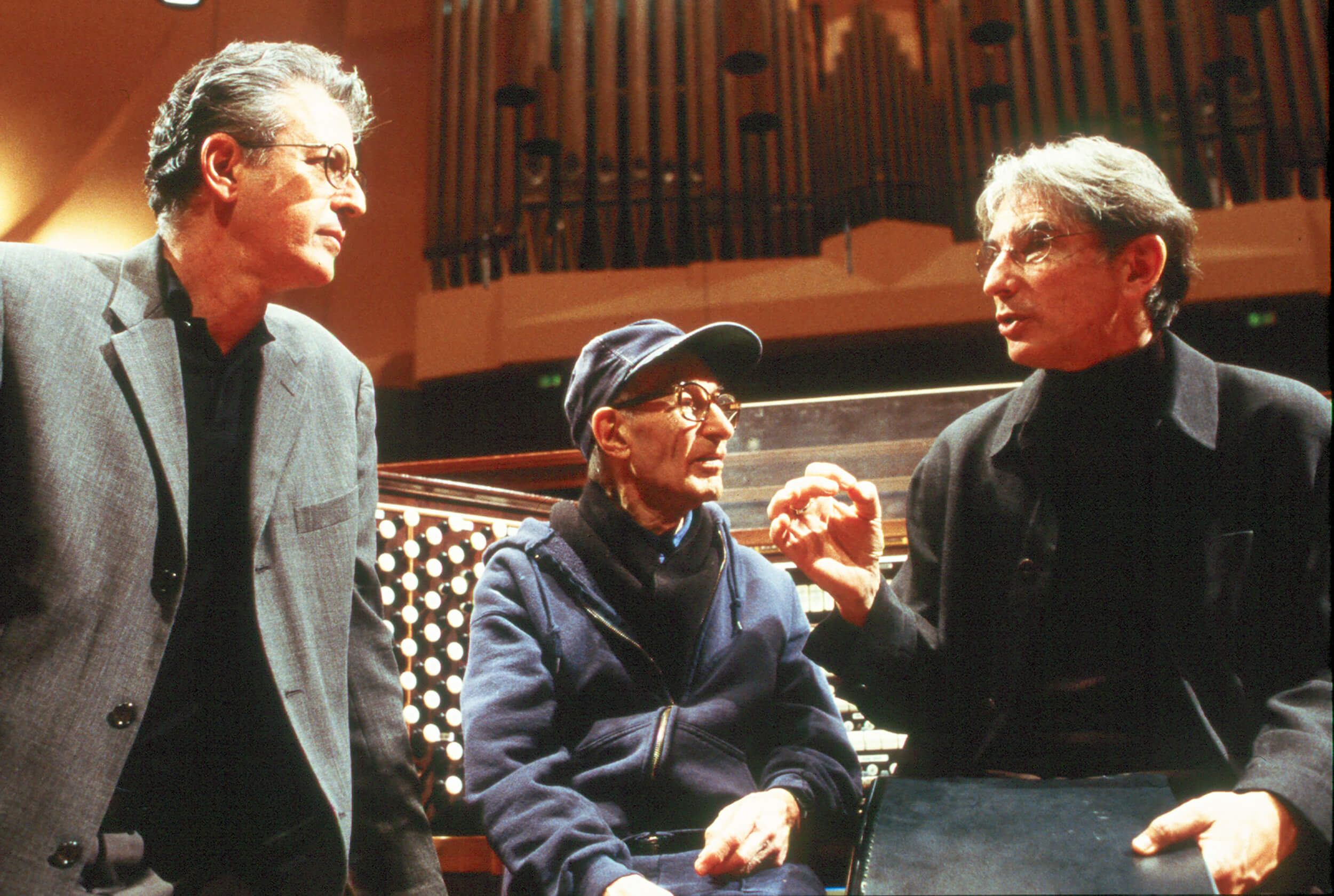
Henry Brant, America’s pioneer explorer and practitioner of 20th Century spatial music, was born in Montreal in 1913 of American parents and began to compose at the age of eight. In 1929 he moved to New York where for the next 20 years he composed and conducted for radio, films, ballet, and jazz groups, at the same time composing experimentally for the concert hall. From 1947 to 1955 he taught orchestration and conducted ensembles at the Juilliard School and Columbia University. At Bennington College, from 1957 to 1980, he taught composition, and every year he presented premieres of orchestral and choral works by living composers. In 1981, Brant made a new home in Santa Barbara, California.
In 1950 Brant began to write spatial music in which the planned positioning of the performers throughout the hall, as well as on stage, is an essential factor in the composing scheme. This procedure, which limits and defines the contrasted music assigned to each performing group, takes as its point of departure the ideas of Charles Ives. All Brant’s principal works since 1950 are spatial. His catalogue now comprises nearly 100 such works, each for a different instrumentation, each requiring a different spatial deployment in the hall, and with maximum distances between groups prescribed in every case. All of Brant’s spatial works were commissioned.
Brant studied the architecture and sound of the selected performance venue to create the site-specific sonic environments. His work incorporates a variety of musical styles, often involving ensembles of folk musicians, choirs, jazz groups, or circus bands, all playing their standard repertoire plus figures composed by Brant himself. Rather than the muddy texture that would occur if all were playing on one stage, Brant’s spatial placement of the musicians allows the audience to hear each voice clearly; this innovation expands the human brain’s capacity to process musical information from widely diverse sources.
In the composer’s words regarding the composition of Ice Field, “I would be interested in composing a 15-minute spatial piece with a large ensemble on stage, and smaller groups and solo players stationed out in the hall in widely separated positions. I would like to include an organ part, to be played by me. The title comes from an actual experience. In July 1926 my family and I sailed from Montreal to France in a mini ocean liner, up the St. Lawrence, and the second day out, in the North Atlantic, our little boat crept slowly, for 6 hours, through a maze of over 100 huge icebergs. I can’t imagine that space travel through a Martian landscape could offer anything more spectacular and fantastic.”
An Other Minds commission, Ice Field was awarded the 2002 Pulitzer Prize in music.
May 17, 2019, the San Francisco Symphony made Ice Field available on a digital-only release available for streaming and download on the SFS Media Label.
Henry Brant on Video
Prelude to an Ice Field, with Henry Brant
Promotional video made by Charles Amirkhanian for Other Minds in advance of the world premiere performance, December 12, 2001, of Henry Brant’s composition, Ice Field. The music was inspired by a 1926 ocean voyage to Europe from North America, made by the composer at the age of 12. At a certain point in the trip, the ship had to navigate through a maze of large chunks of ice, creating potential danger for ship, crew and passengers. The experience left an indelible impression on young Henry. Ice Field was composed for large orchestral groups and organ, arrayed in widely separated locations in the performance space. It was commissioned by Other Minds, with funds from the Rockefeller Foundation’s Multi-Arts Production Fund, and premiered by the San Francisco Symphony Orchestra under Michael Tilson Thomas. Brant’s work was awarded the 2002 Pulitzer Prize for Music Composition. The piece is subtitled “Spatial Narratives for Large and Small Orchestral Groups” and utilizes more than 100 players and two conductors.
The music was composed in Santa Barbara, California, and completed in June 2001. The score of Ice Field is published by Carl Fischer, LLC.
Henry Brant
Handbook for the Spatial Composer
Henry Brant (1913 – 2008) was the pioneer of music for multiple ensembles separated in space. With over 100 such works his experience orchestrating for such forces is invaluable. In 2002 Preston Wright videotaped Henry talking in his Santa Barbara home, alongside Kathy Wilkowski and Philip Blackburn.
Henry Brant
Orbits
Performance at the Blanton Museum of Art in Austin, Texas, of Henry Brant’s work Orbits. Part of the SoundSpace series of performances. This performance was conducted by Stefan Sanders, and played by Charlie Magnone, organ, Laura Mercado-Wright, mezzo soprano, and a host of trombones.



